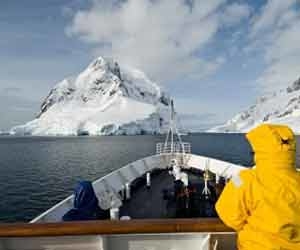Cruise Industry Trends From the 70s to 90s
In 1974, to boost a declining market, Cunard Line Limited, the company running transatlantic travel service between New York and London with the Queen Elizabeth II, hired international celebrities to perform cabaret acts aboard ship. They advertised the crossing as a vacation/entertainment experience with Las Vegas – caliber shows.

The QE2, still one of the fastest passenger liners afloat with a maximum cruising speed of 38 knots, was the perfect vessel to inaugurate these changes. While it was fast enough to whisk passengers from London to New York in just four days, it was elegant enough to stage big productions. The QE2 also ushered in the concept of “one-class” cruising, as the ship’s facilities and amenities were made available to all passengers. Regardless of the staterooms or berths passengers had booked, they enjoyed the same service, menus, entertainment, and activities. The idea caught on, and the general public began taking cruises for short vacations, rather than solely as a means of transportation. Of course, it would only be fair to also give credit to the creators of the original “Love Boat” 1970s television series for the resurgence in popularity of romantic cruises for singles and couples. While the show’s storylines were made of the usual Hollywood fluff, its gorgeous scenery and exotic ports of call had an undeniable impact on millions of viewers every week.
The cruise industry broke new ground again in the 1980s launching a fleet of giant passenger liners, some capable of carrying over 2,000 people. These megaships were built exclusively for vacationers, maintaining a cruising schedule to sun-drenched locales around the globe. Unlike their predecessors, this fleet was designed as all-inclusive magnificent floating hotels with casinos, running tracks, spas, champagne and caviar bars, basketball courts, private stateroom verandahs, and three-story nightclubs. Suddenly, ports of call were not the main selling point for travelers. Instead, people were interested in the whole experience of just being on board. Carnival Cruise Lines made quite a splash marketing its shipboard experience rather than its destinations to the vacationing public.
Quickly, many other major cruise lines followed suit. Throughout these new glittering palaces the message was “luxury for the masses,” and for the most part, this is still the rallying cry of the cruise industry.
Where have the wealthy pleasure cruisers gone? The upscale cruise lines found their niche as well by using a fleet of smaller ships that can visit secluded ports, avoiding the popular bustle of big-name destinations. Additionally, concern for the environment has created cruise itineraries that involve ecologically friendly agendas. Termed “eco-tours,” this new branch of the tourism industry balances the needs of the environment with the desire to see the world. Companies specializing in eco-cruises focus on education, wildlife, and relaxation, rather than entertainment, gambling, and margaritas. The ships are small and fares are often high, but they guarantee exotic, quiet destinations and a healthy conscience. The markets continue to grow steadily for these specialized companies.


 Teach English in Asia
Teach English in Asia  Cruise Ship Jobs
Cruise Ship Jobs  Alaska Fishing Industry Jobs
Alaska Fishing Industry Jobs  Sharing Economy / Gig Economy
Sharing Economy / Gig Economy